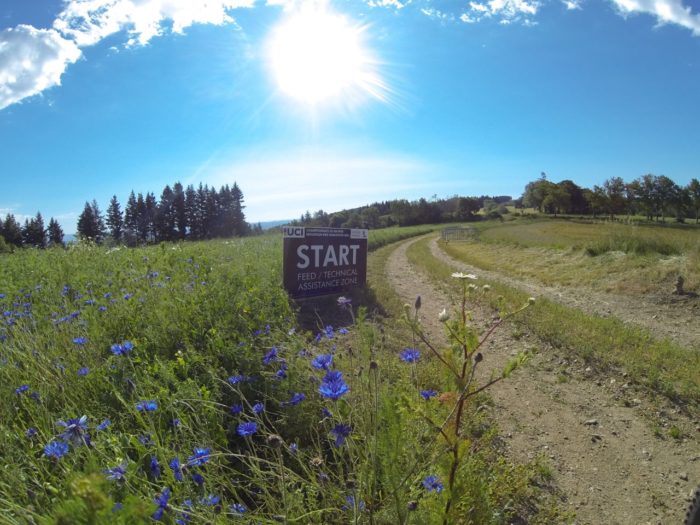The UCI Cross-Country Marathon (XCM) Mountain Bike World Championships has been stuck into the last weekend of June. This makes planning a little easier from a long way out, but it also makes the race fairly Euro-centric. But the sport is too – so that is ok.
A couple of days ago we took a punt on who could win, or podium, at the XCM World Championships. It’s fair to say we’ll see Alban Lakata and Jaroslav Kulhavy fighting for the win in the men’s race- and probably Jolanda Neff and Annika Langvad in the women’s, with Sally Bigham quite likely to be right in the fight too.
But, what of the course? This year, the Roc Laissagais in Laissac hosts the XCM World Championships. Traditionally falling in April, and traditionally being pretty muddy, the race is also celebrating its 25th year – and what a way to party, with the worlds best in town!
The courses have been modified in advance, creating different lengths for men and women – this keeps the race time very similar. A brilliant idea that would be great to see in events beyond the World Championship – although that is a matter of opinion. The men race 90km with 3190m of climbing, and the women race 70km with 2587m of climbing.
Laissac is not an alpine town, although it is in the Midi-Pyrenees. That means the climbs aren’t long 30-45 minute affairs, but instead they are punchier, with far more changes of speed, gradient, terrain and direction.
The course for the World Championships
The race starts right in town, outside France’s 2nd biggest cattleyard. The fields will tear through town and up the first climb, gaining and losing altitude for about 6km before a longer descent and then another climb. The first feedzone is above Trebosc, as the course climbs up into the hills again. The climb is often hidden by hedgerows, and is currently made up of loose rock, some mud, and some running water. Positioning and technique are crucial. The descent is fast and pretty flowy, on natural singletrack through the forest, with plenty to catch a foot or mech on. It drops into more rocky terrain, with steeper chutes and conditions not unlike the rockier parts of southern France.
And then, it hooks about 270 degrees into climbing up another slightly muddy, steep, gully, with a few pinches and rocks to get over to get out near the top. Open descents follow, before a climb to feed zone two. Here, the men do their extra loop. The women lead into one of the best descents I’ve ridden in a European XCM event, with lots of tight turns through the trees, small drops and little gaps to keep riders guessing. Another climb across an open, logged hill top brings riders up higher again, before a descent through off-camber singletrack and then old cobbled forest roads towards Trebosc, and another pass through the first feed before heading on through undulating forest trails and farm land.
After the next feed zone, we’re downhill again, although this section is still pretty slick, it might be drier come race day. The climb to the next feed zone is straight forward, although the feed ends on a sharp uphill corner into grassy double track. All the feed zones are on climbs, and as GB National Champ Ben Thomas noted – that’s not very useful for spares in the tech zone if you flat on the descent.
Cresting the next climb the singletrack entry into the forest is a blast, but once on double track it gets steeper, before entering singletrack bunted in the pines with a steep exit. Rolling down the road riders cross over a stream and start a small climb up road before traversing into the forrest.
The next descent is quite long, at about 2 minutes. It’s narrow doubletrack in dark forrest, with one better line but plenty of fun. There are some better lines, but the creek crossing at the bottom has the most risk with plenty of big rocks on the right to hit.
Through some mud in the lower areas, the course diverts into singletrack and a ditch that a powerful bunnyhop will clear. Or a dab will do.
Crossing a farm road, the major final climb begins. Through farms, then fields, then on singletrack between hedgerows, and then more fields – and finally the last feed zone at about 11km to go.
The first part of the descent from here is standard forest trail, but gets steeper as you progress, before pitching into a left hander and steep climb. Repeat that about 4 times, with two muddy sections – and that’s the final descent. There is a sizeable climb of about 100m gain near the end which might be baking in the sun, and could be the undoing of some.
The final kilometres are flat out through farms, then town, bringing riders back to the cattleyards, and bringing rainbow stripes for two riders.
But who?

